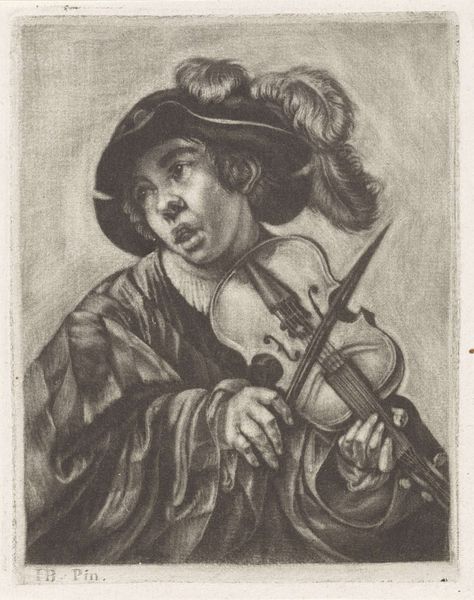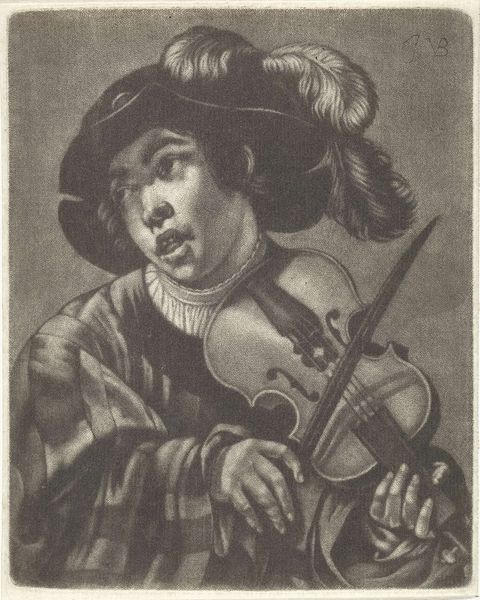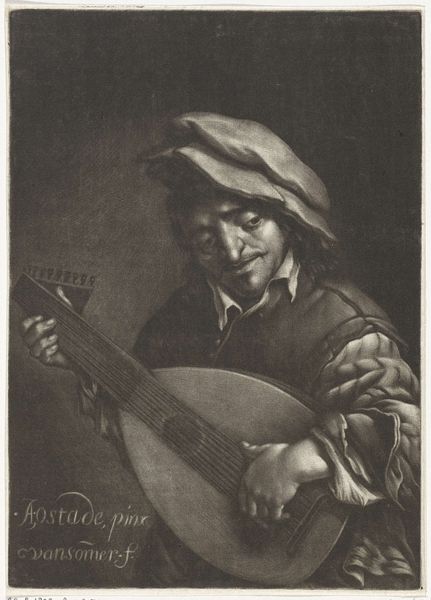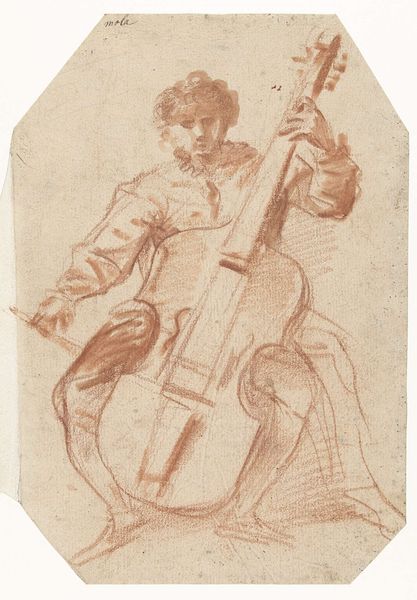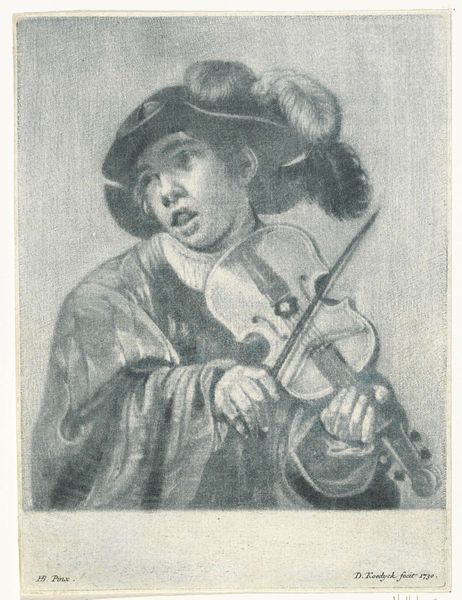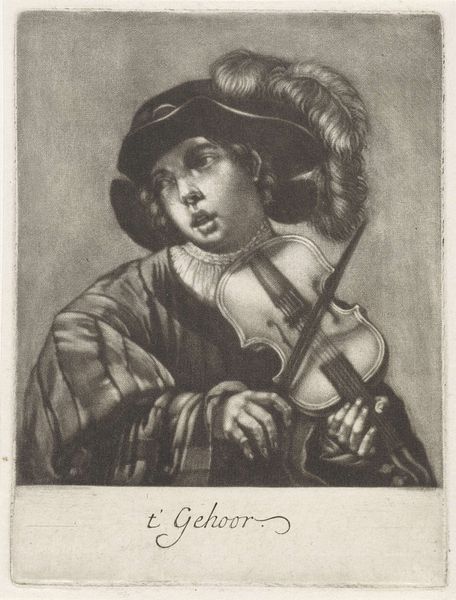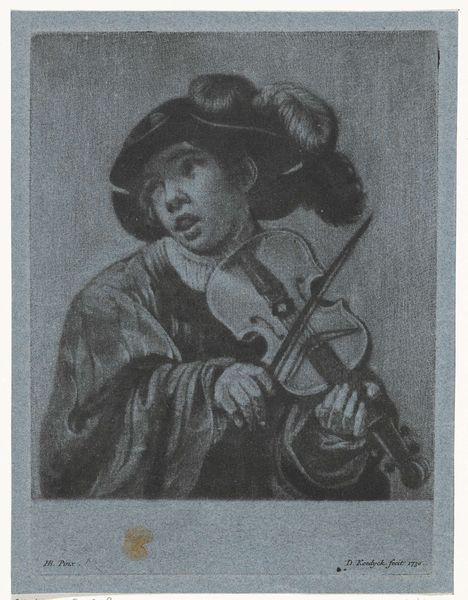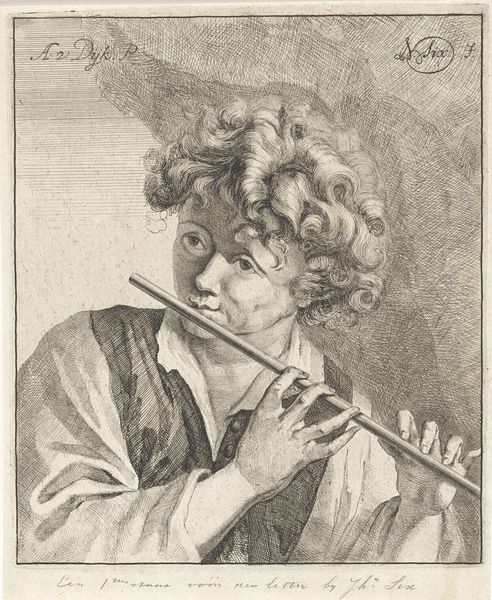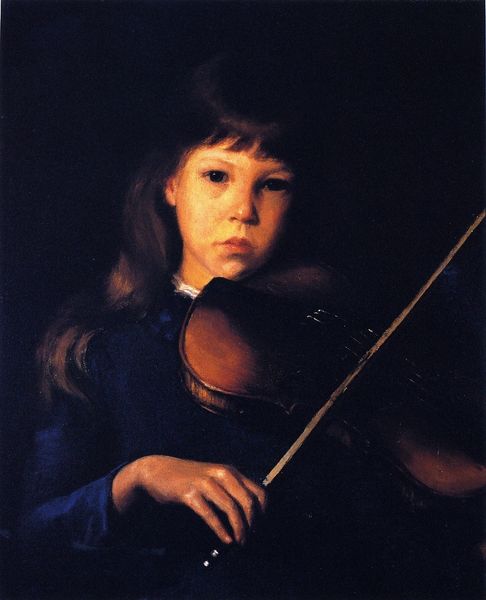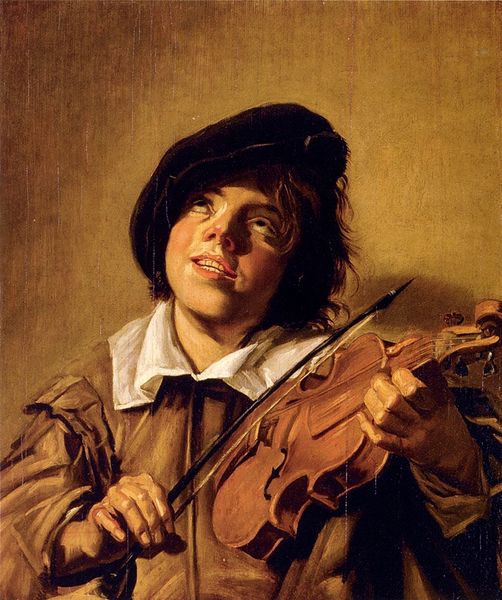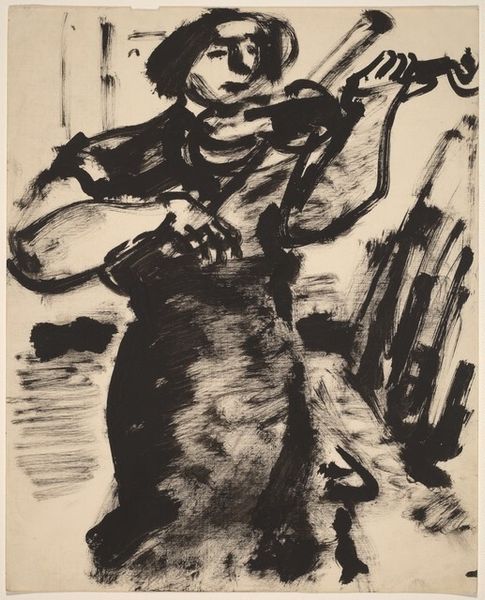
print, etching, engraving
#
portrait
#
pencil drawn
#
baroque
# print
#
etching
#
engraving
Dimensions: height 196 mm, width 128 mm
Copyright: Rijks Museum: Open Domain
This is Jan Griffier’s “Portret van Daniel Boon,” a delicate etching made sometime between the mid-seventeenth and early eighteenth century. The process of etching involves drawing with a sharp needle through a waxy ground applied to a metal plate, which is then exposed to acid. The acid bites away the exposed lines, and the plate is then inked and printed. The fine, precise lines capture the delicate details of the musician's face and costume, as well as the texture of his feathered hat and the smooth surface of his violin. Etching was especially favored by printmakers as it allowed for tremendous control, permitting fine details and tonal variations that were more difficult to achieve with other printing methods like engraving. Prints like this one were relatively affordable, making art accessible to a wider audience beyond the wealthy elite who could commission paintings. This speaks to the evolving economics of art production during this period, where skilled craftsmanship met emerging market demands. By understanding the labor-intensive process and the social context of printmaking, we can appreciate the full complexity of this seemingly simple image.
Comments
No comments
Be the first to comment and join the conversation on the ultimate creative platform.
